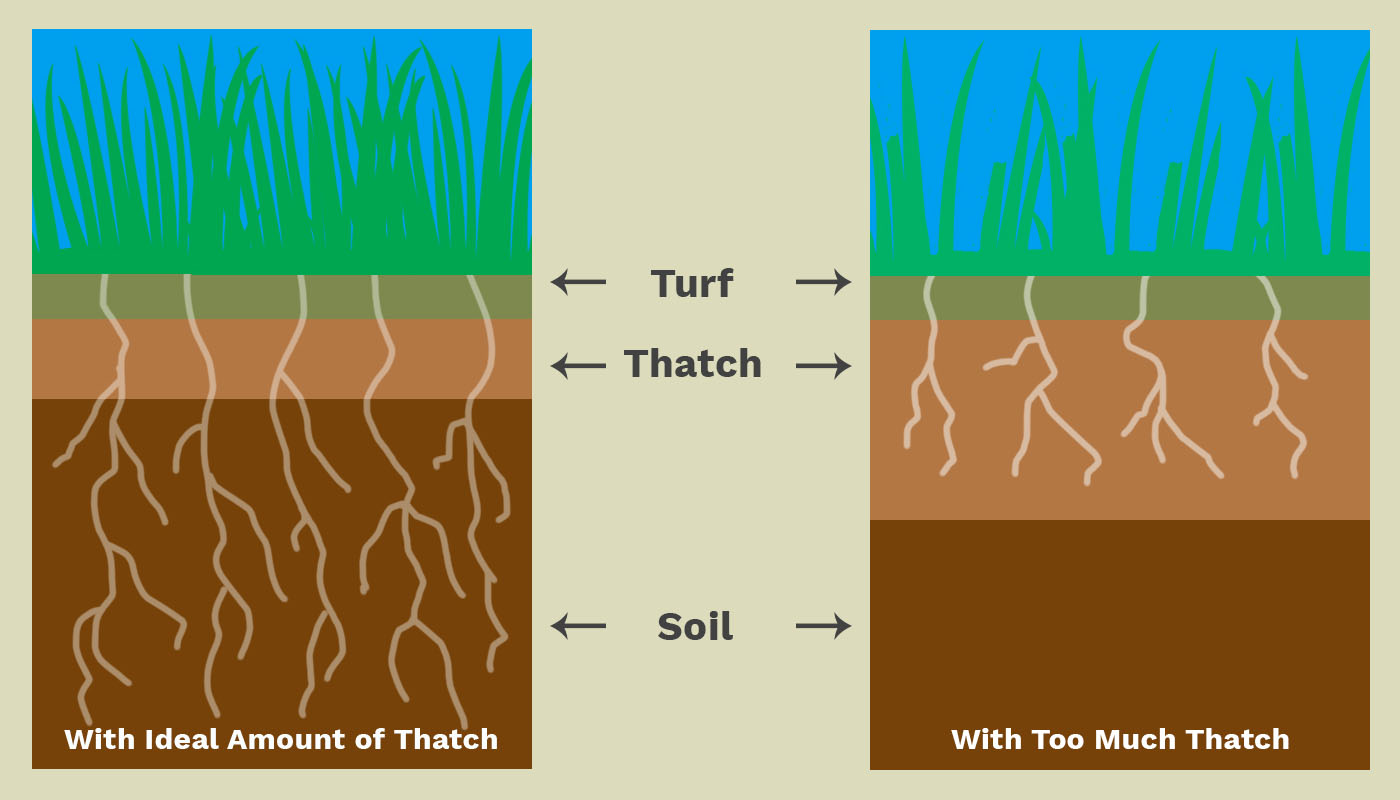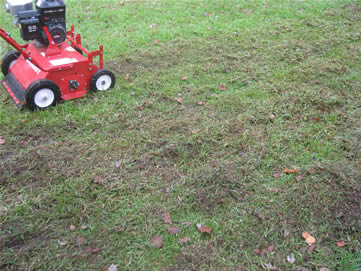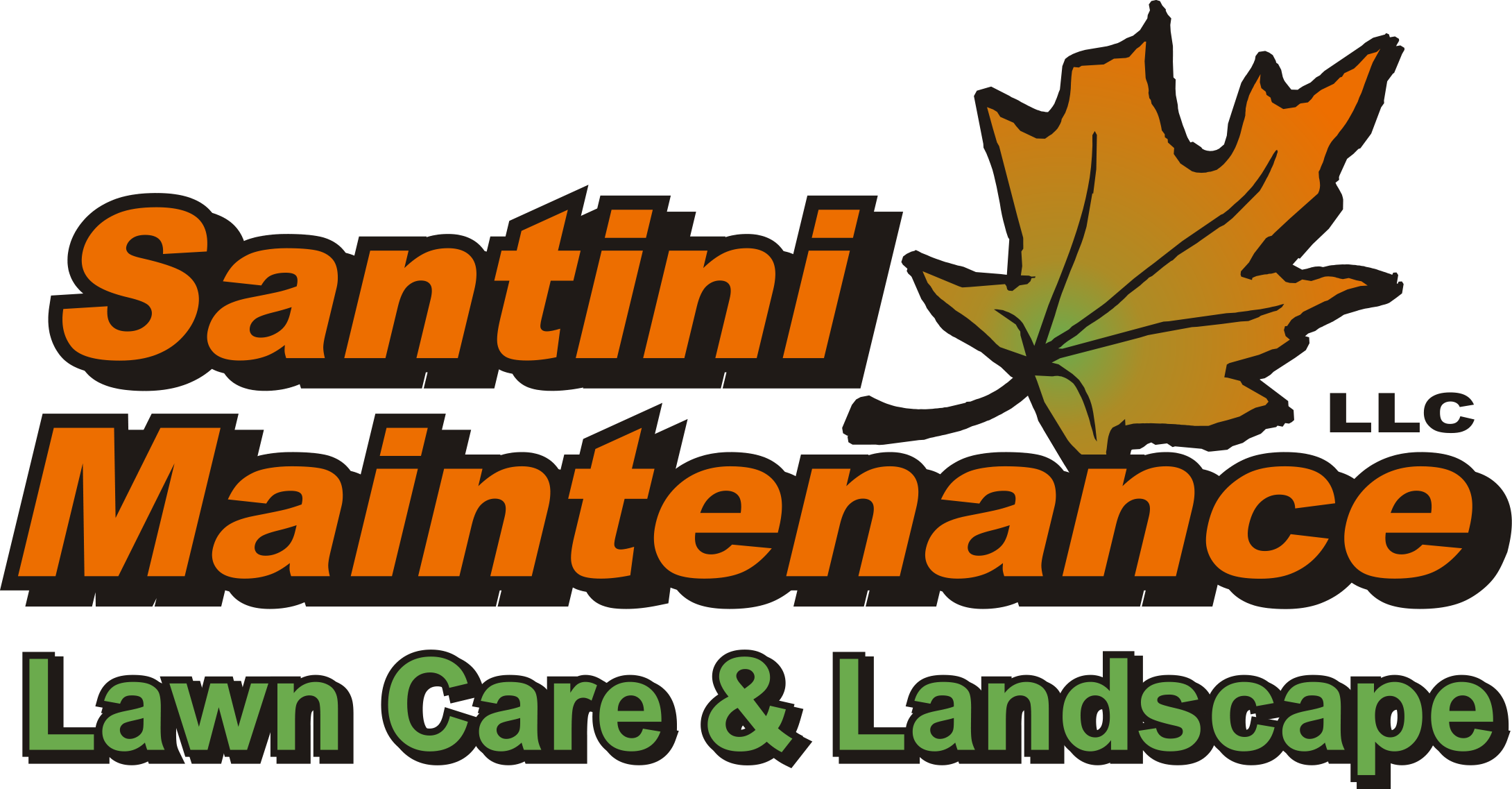Lawn Thatching
At the base of your grass blades is your turf, a layer of earth that serves as the surface of your lawn. Beneath this, sandwiched between your turf and thatch the soil is thatch, a tightly-knit accumulation of dead but un-decomposed organic debris. Thatch is a normal part of your lawn. It's natural function is to conserve water, insulate the grass from fluctuating temperatures, and increase your turf's resilience. The "right" amount of thatch is less than 1/2 inch.

Too much thatch - more than 1/2 inch - is harmful to your lawn. It will become a waterproof carpet over the soil, preventing the soil from getting enough moisture. The roots of the grass then grow in the thatch layer (because there is insufficient water in the soil), and these shallow root systems decrease the turf's defense against insects, diseases, temperature extremes and drought.
Although you cannot see the actual thatch layer (because it is below the (turf), the undesirable symptoms of too much thatch are plainly visible: browning, thinning, ailing grass that cannot endure hot weather, cold weather, or water shortages.
Our Thatching Process and How It Benefits Your Lawn
Santini Maintenance offers a thatching service that removes excess thatch from lawns with a dethatcher (sort of like a vertical mower). This causes some tearing to your yard and may take a few weeks to regain a healthy appearance.
However, this service provides an invaluable benefit to your grass and the result will be a healthier, more resilient lawn. dethatching. There are "seasons" for removing thatch: if done at the wrong time of year, your grass may suffer more damage due to exposure to temperature extremes or draught. The best times to have your thatch removed are late April / May and September / early October (depending on weather).
While our Thatching service can certainly be a stand-alone project, we strongly recommend aerating at the same time. Aerating will ensure that your soil regains the water and nutrients it needs to restore your lawn.

How to Prevent Thatch Build Up
Contrary to popular misconception, grass clippings do not contribute to thatch build-up. In fact, fine clippings (when your grass is mowed on a regular basis and the clippings are not too long) act as a natural fertilizer that minimizes thatch and adds to the vitality of your lawn.
So what causes excessive thatch? Many things, including poor aeration, soil composition, rotten leaves and yard waste sitting on your grass. Even excessive pesticides and herbicides can aid in the acceleration of thatch build-up, because they drive away earthworms, your soil's natural aerators.
To prevent thatch, make sure your lawn is mowed regularly, remove fallen leaves promptly, aerate at least once a year to help air, moisture, and nutrients reach the soil; and when watering, make sure to saturate the soil completely to encourage the roots to grow downward rather than up towards the turf.
How to Make Arrangements for Dethatching
Since the best times to have a dethatching process done to your lawn are April/May and September/October, it is best to make arrangements during these months. To schedule service call/text us at 609-249-5610 or use our request an estimate using our online form.
Our Service Areas
Dethatching, aerating and our full range of lawn care and landscape maintenance services are available throughout Mercer County, including: Hamilton Twp., Hamilton Square, Mercerville, Groveville, Yardville, Robbinsville, Bordentown, Lawrence Twp., Lawrenceville, Princeton, Princeton Jct


